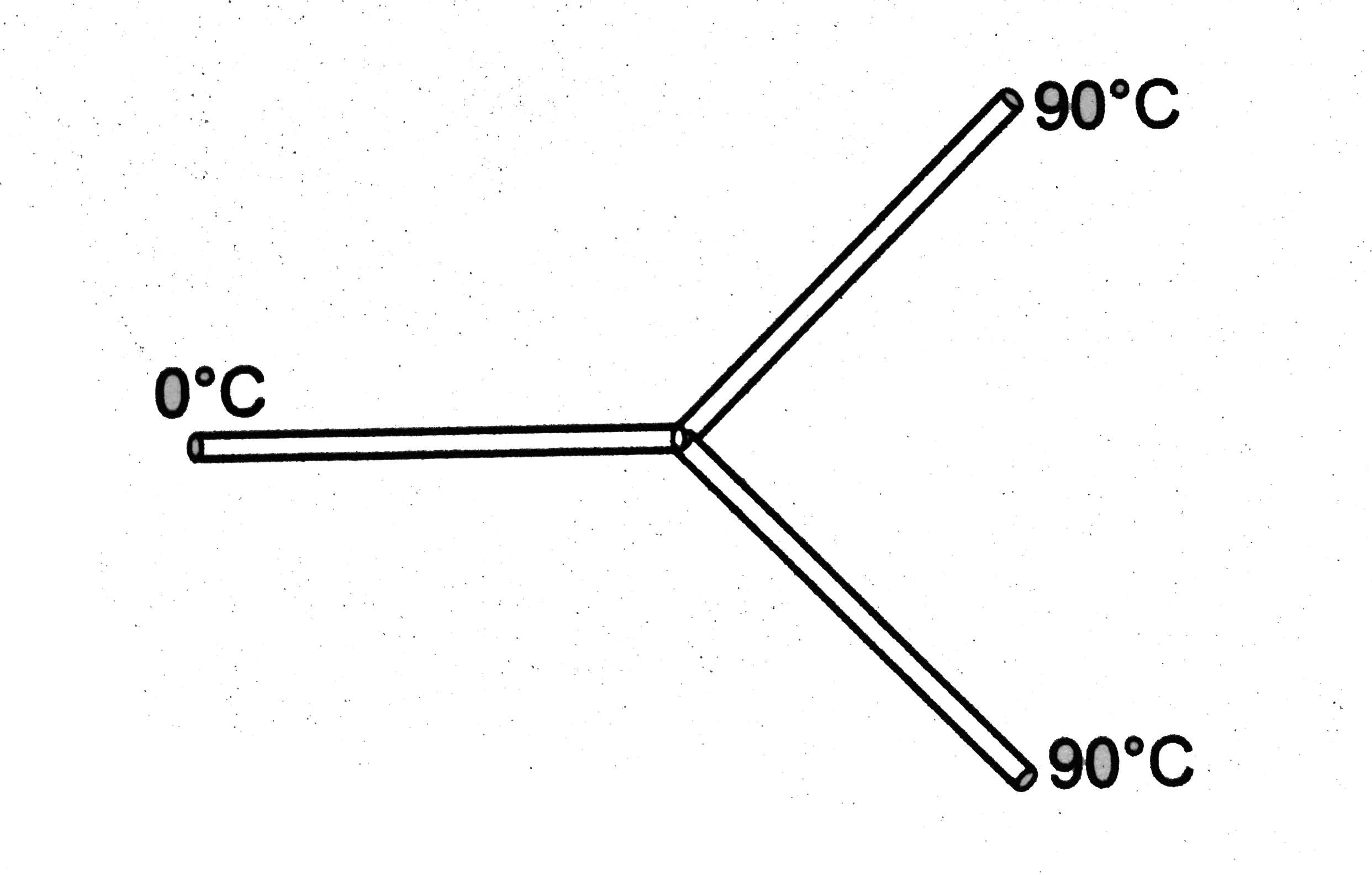Transmission Of Heat : Conduction from A2Z PHYSICS Chapter 11 THERMAL PROPERTIES OF MATTER for Class 11
| Class 11 | PHYSICS |
| Chapter | THERMAL PROPERTIES OF MATTER |
| A2Z PHYSICS | Transmission Of Heat : Conduction |
| Medium | English |
| Academic Year | 2023-2024 |
Question 1
Two bars of thermal conductivities K and 3K and lengths 1cm and 2cm respectively have equal cross-sectional area, they are joined lengths wise as shown in the figure. If the temperature at the ends of this composite bar is 0∘C and K2/l respectively (see figure), then the temperature ϕ of the interface is
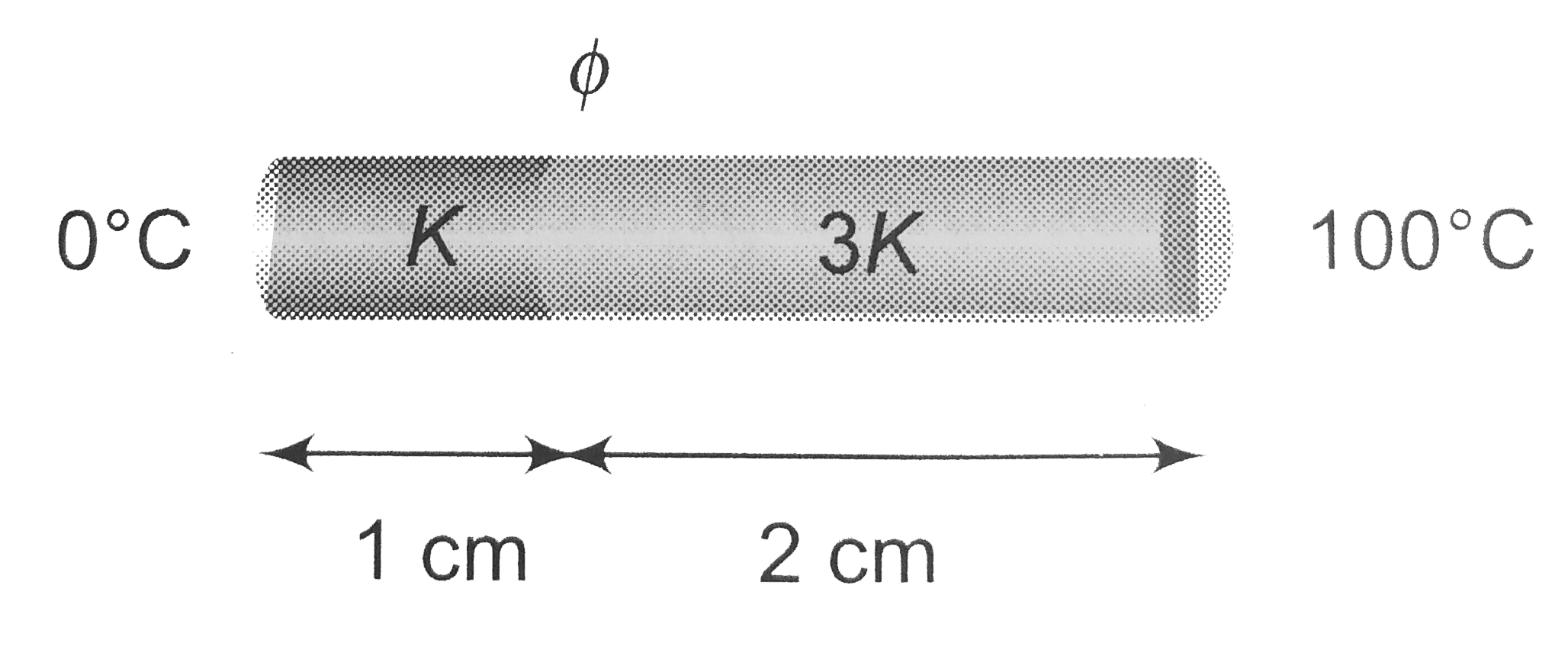 View Solution
View SolutionQuestion 8
Ice has formed on a shallow pond, and a steady state has been reached, with the air above the ice at −5.0∘C and the bottom of the pond at 40∘C. If the total depth of ice + water is 1.4m, (Assume that the thermal conductivities of ice and water are 0.40 and 0.12cal/mC∘s, respectively.)
The thickness of ice layer isView SolutionQuestion 10
A wall has two layers A and B each made of different materials. The layer A is 10cm thick and B is 20 cm thick. The thermal conductivity of A is thrice that of B. Under thermal equilibrium temperature difference across the wall is 35∘C. The difference of temperature across the layer A is View SolutionQuestion 11
Two rods (one semi-circular and other straight) of same material and of same cross-sectional area are joined as shown in the figure. The point A and B are maintained at different temperature. Find the ratio of the heat transferred through a cross-section of a semi-circular rod to the heat transferred through a cross section of the straight rod in a given time.
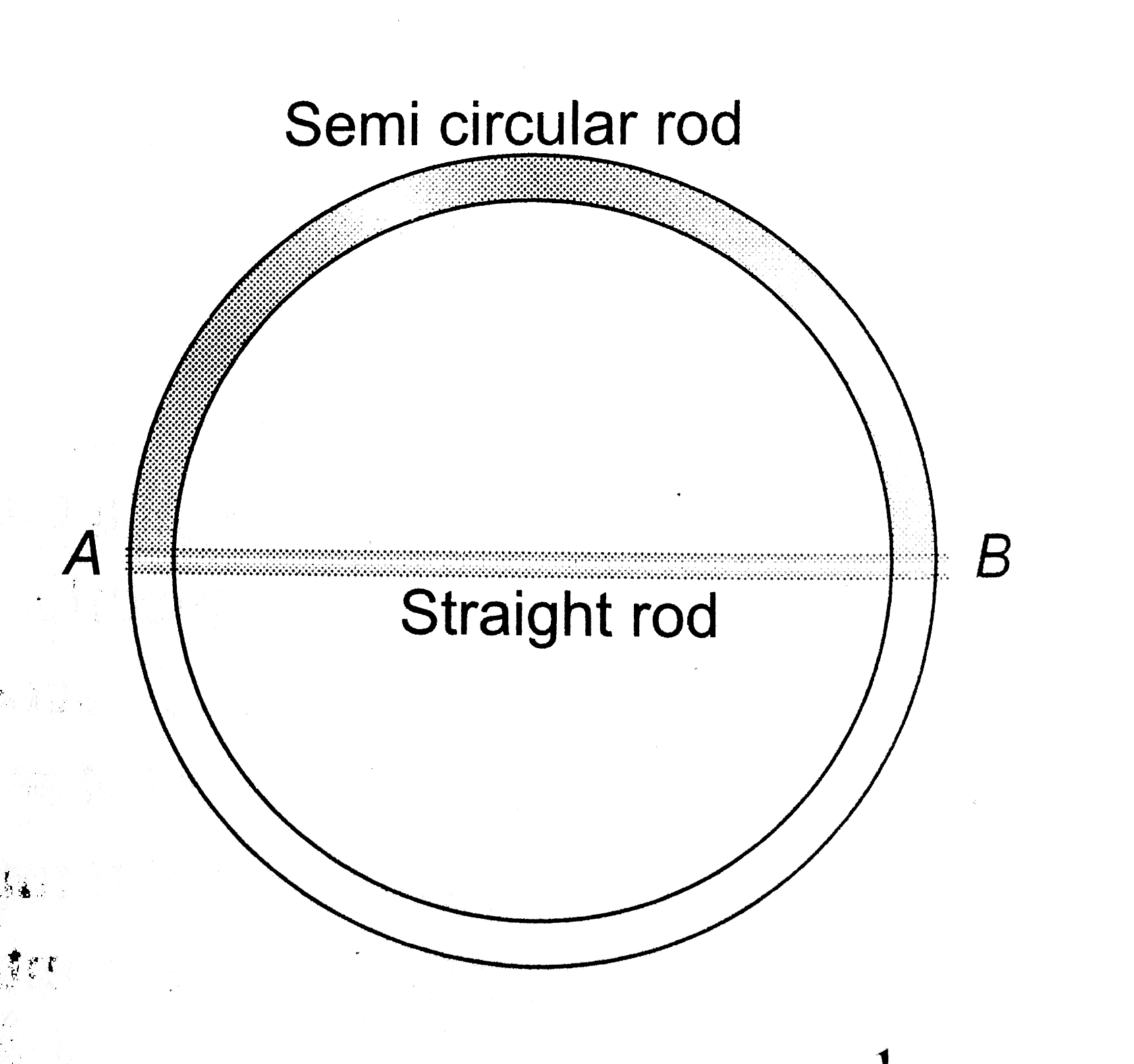 View Solution
View SolutionQuestion 12
Two spheres of different materials one with double the radius and one-fourth wall thickness of the other are filled with ice. If the time taken for complete melting of ice in the larger sphere is 25 minutes and for smaller one is 16 minutes, the ratio of thermal conductivities of the materials of larger sphere to that of smaller sphere is:View SolutionQuestion 14
A cylinder of radius R made of a material of thermal conductivity K1 is surrounded by a cylindrical shell of inner radius R and outer radius 2R made of a material of thermal conductivity K2. The two ends of the combined system are maintained at two different temperatures. There is no loss of heat across the cylindrical surface and the system is in steady state. The effective thermal conductivity of the system is View SolutionQuestion 17
A wall has two layers A and B each made of different materials. Both the layers have the same thickness. The thermal conductivity of materials A is twice of B. Under thermal equilibrium temperature difference across the layer B is 36∘C. The temperature difference across layer A is View SolutionQuestion 21
Two identical rectangular rods of metal are welded end to end in series between temperature 0∘C and 100∘Cand10J of heat is conducted (in steady state process) through the rod in 2.00min. if 5 such rods are taken and joined as shown in figure maintaining the same temperature difference between A and B, then the time in which 20J heat will flow through the rods is
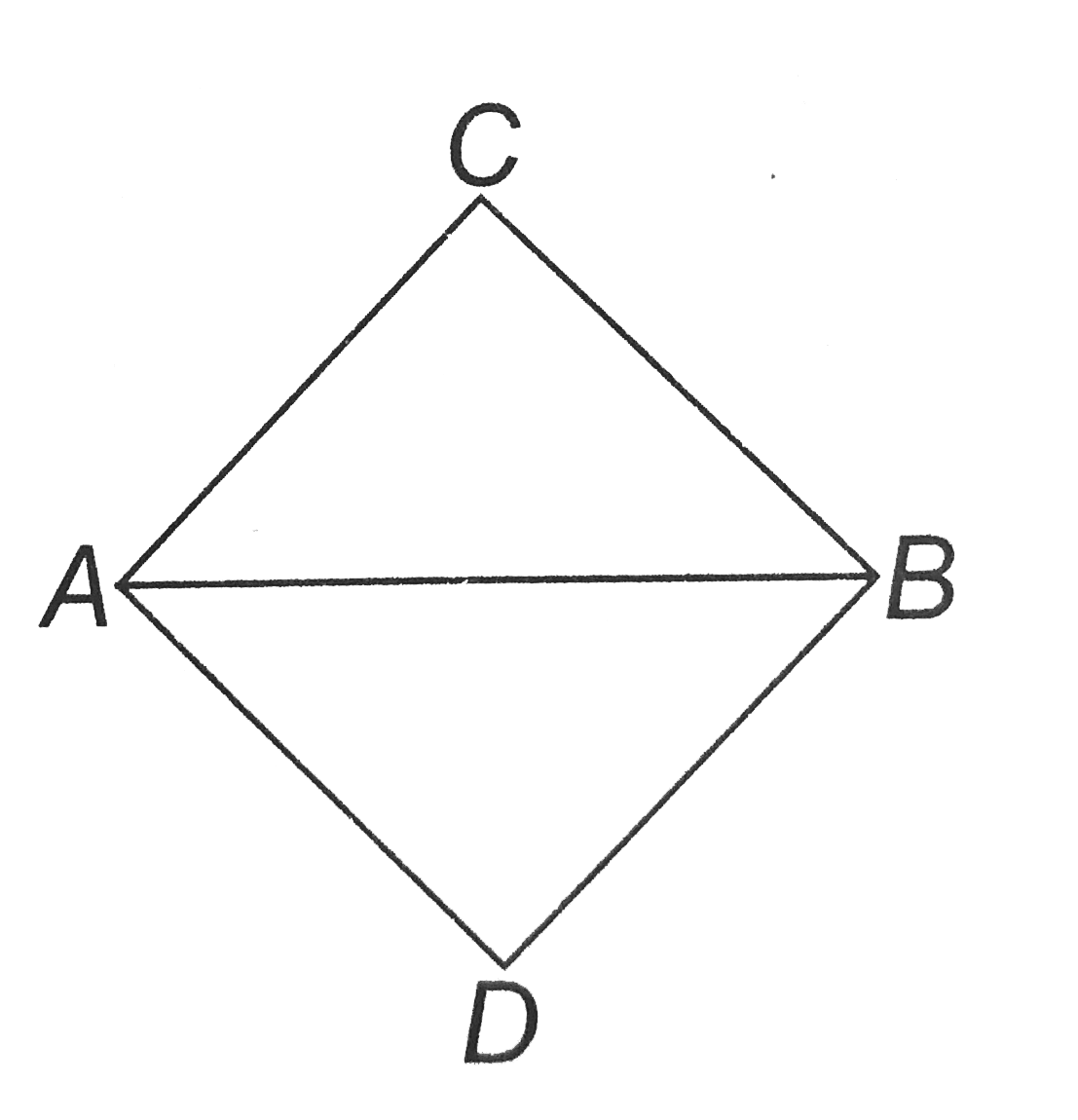 View Solution
View SolutionQuestion 22
Figure shows in cross section a wall consisting of four layers with thermal conductivities K1=0.06W/mK,K3=0.04W/mKandK4=0.10W/mK. The layer thickness are L1=1.5cm,L3=2.8cmandL4=3.5cm. The temperature of interfaces is as shown in figure. energy transfer through the wall is in steady state. the temperature of the interface between layer 3and4 is:
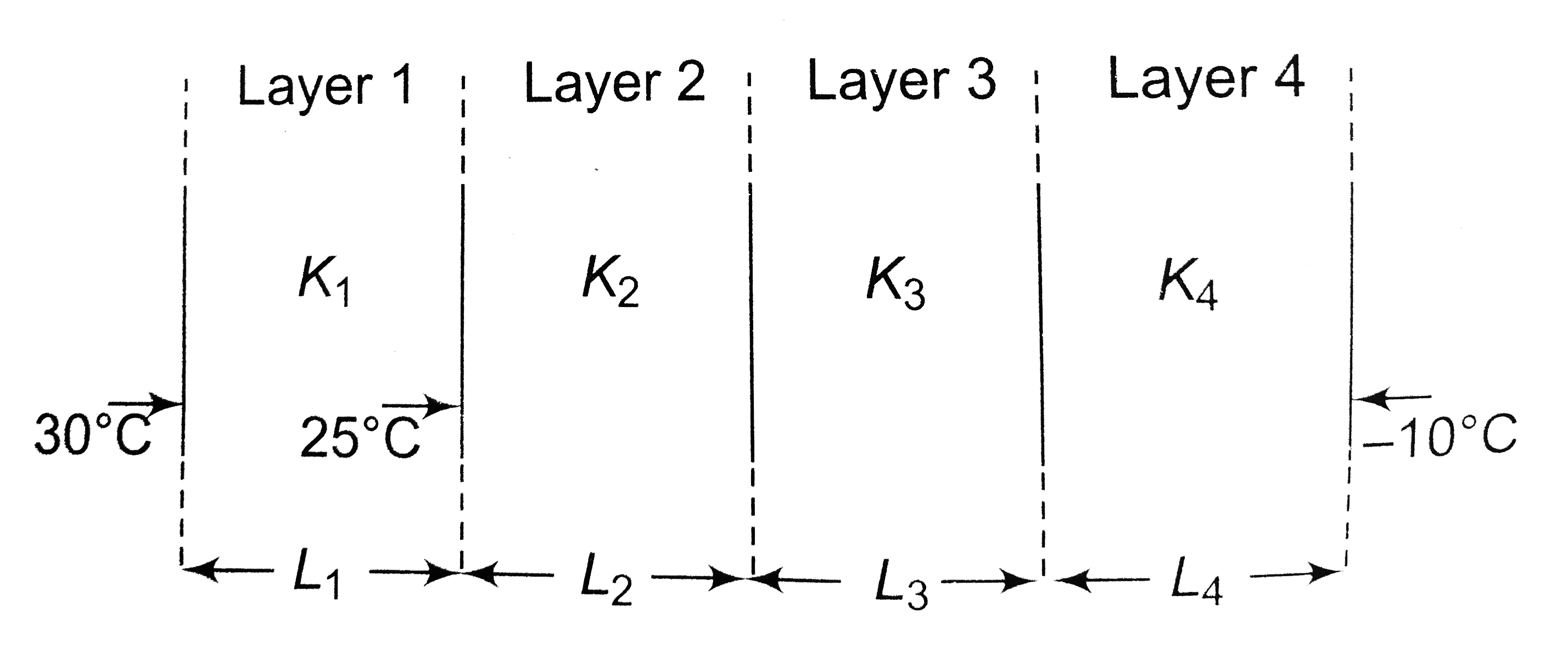 View Solution
View SolutionQuestion 25
A cylinder A of a material of thermal conductivity K1 is surrounded by a cylindrical shell of inner radius equal to the cylinder. The shell is made of a material of thermal conductivity K2. The two ends of the combined system are maintained at two different temperature. if the effective thermal conductivity of the system is 4K1+5K29, find the rate of outer radius of the shell to the radius of the cylinder.
 View Solution
View SolutionQuestion 27
A slab X of thickness 't', thermal conductivity 'K' and area of cross-section 'A' is placed in thermal contact with another slab Y which is 2n2 times thicker, 4n times conductive and having n times larger cross-section area. If the outside face of X is maintained at 100∘C, the outside face of Y at 0∘C, then the temperature of the junction is represented by the graph (n>0)View SolutionQuestion 28
The graph shown gives the temperature along an X axis that extends directly through a wall consisting of three layers A, B and C. The air temperature on one side of the wall is 150∘C and on the other side is 80∘C. Thermal conduction through the wall is steady. Out of the three layers A B and C, thermal conductivity is greatest of the layer
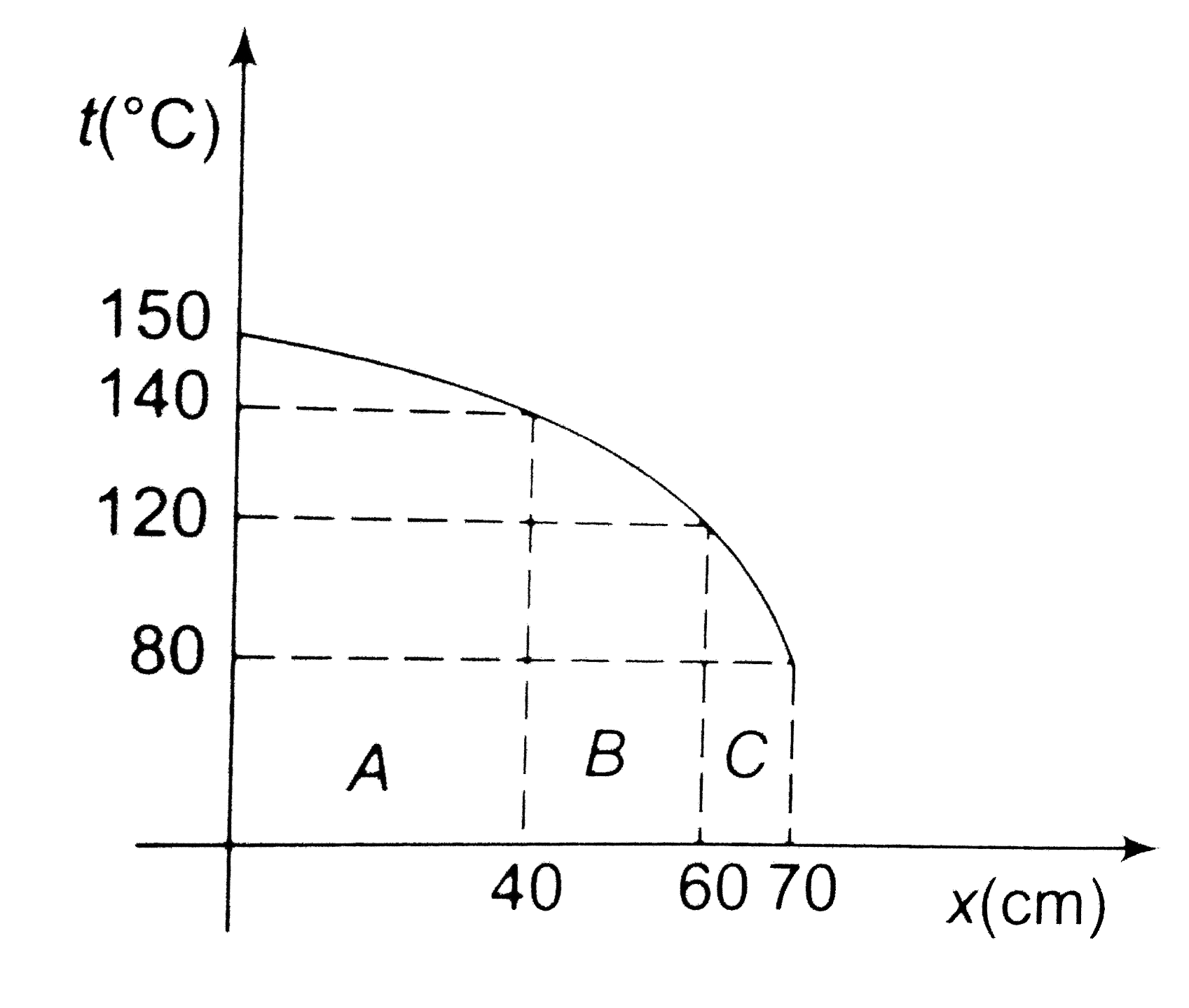 View Solution
View Solution

